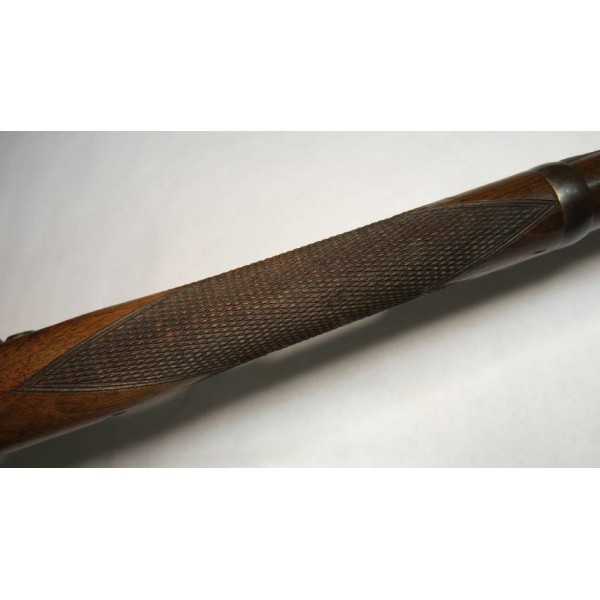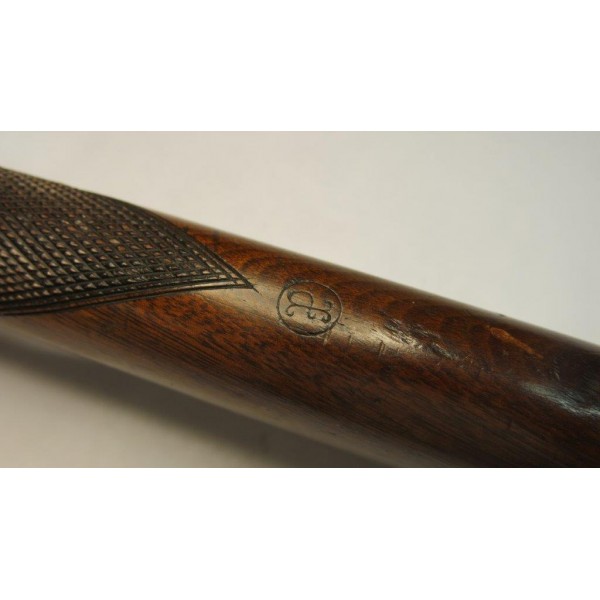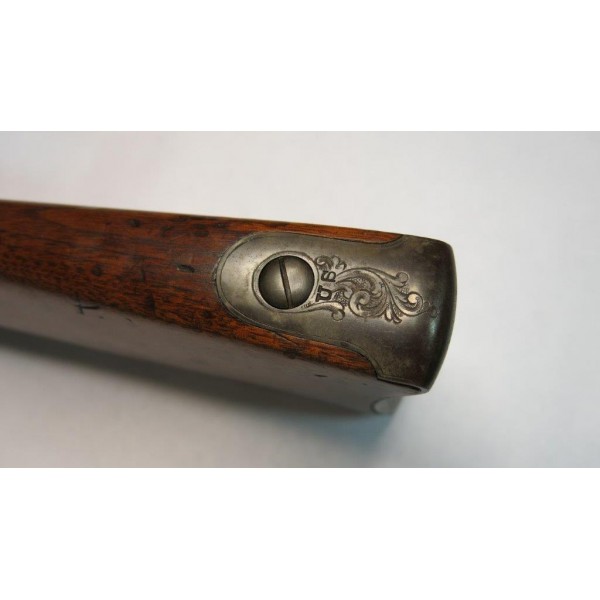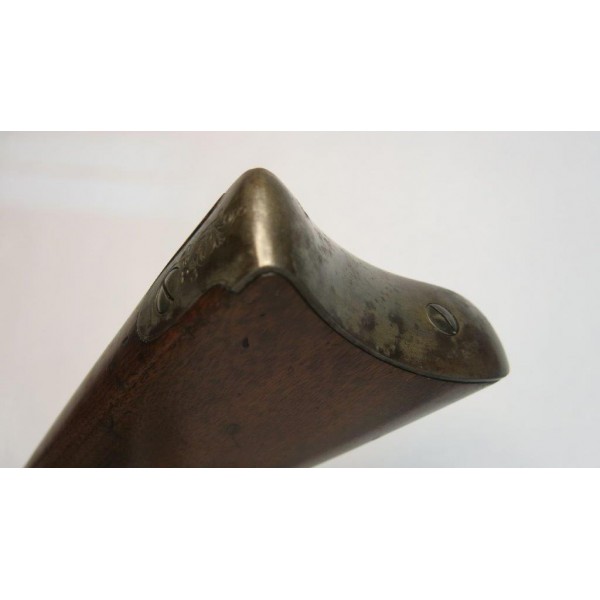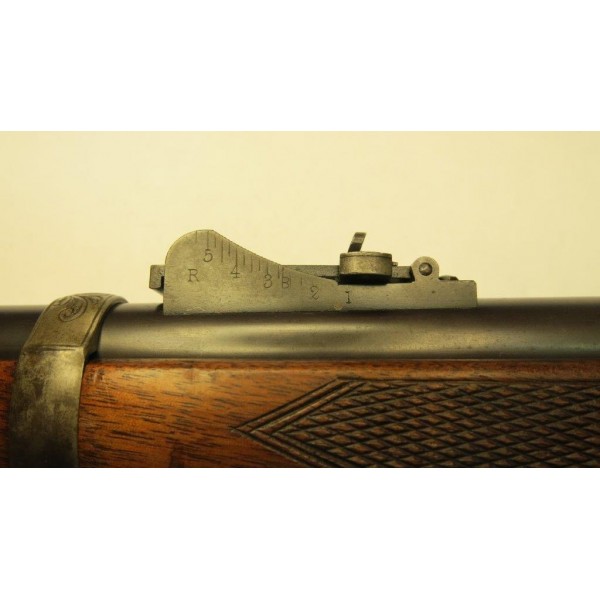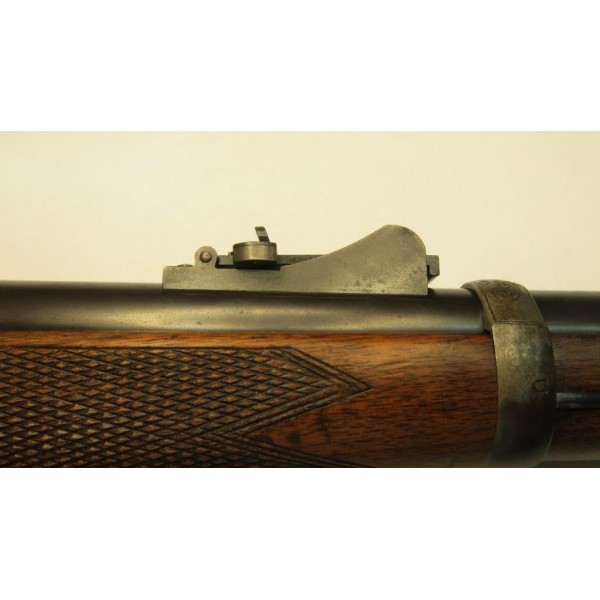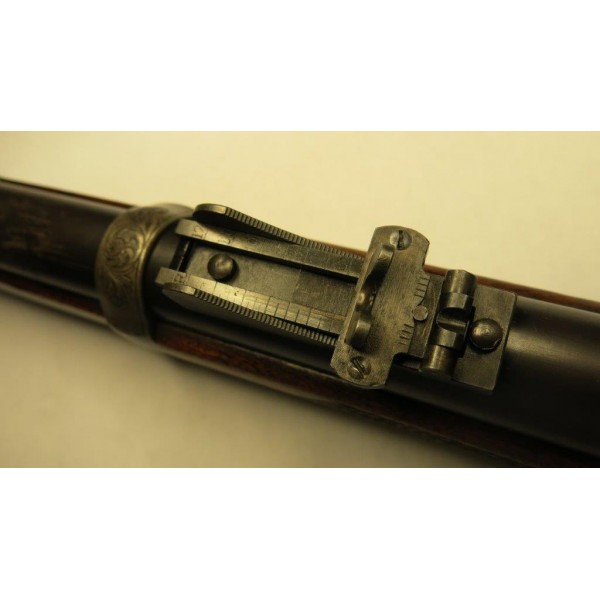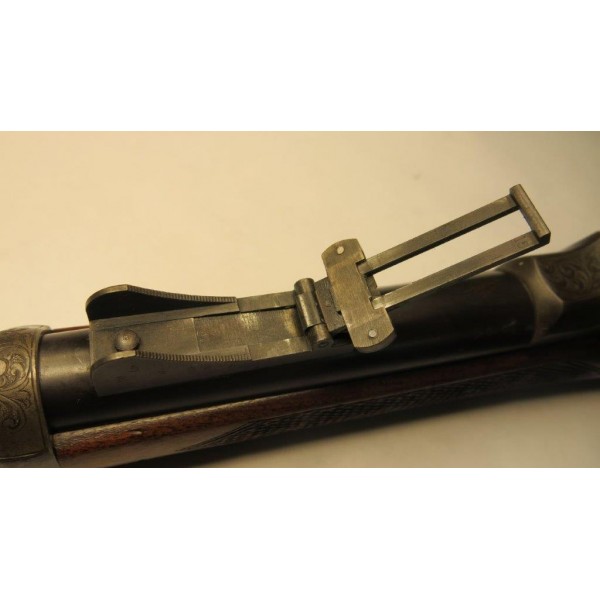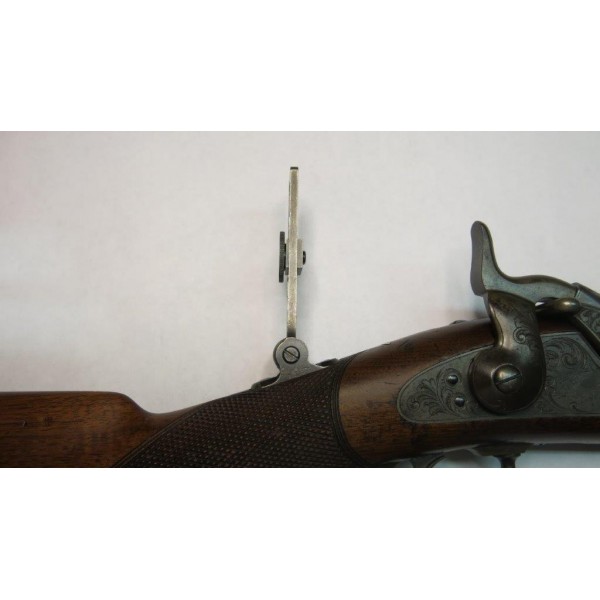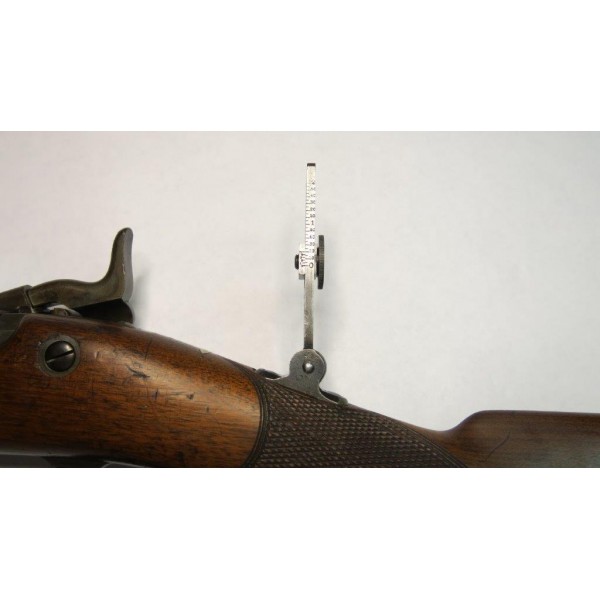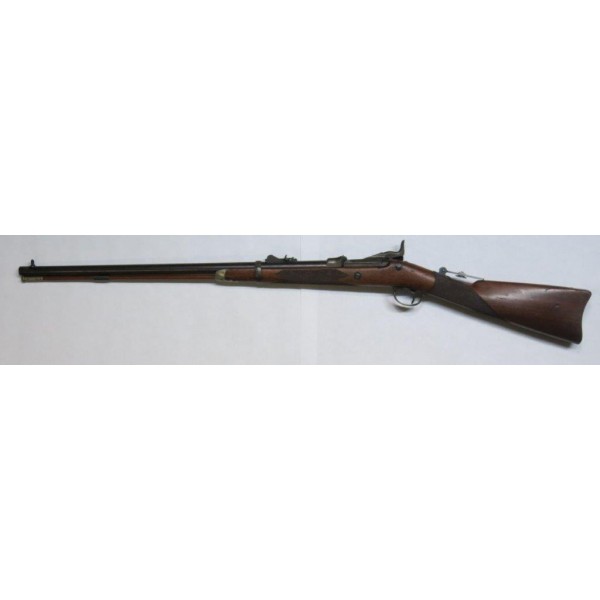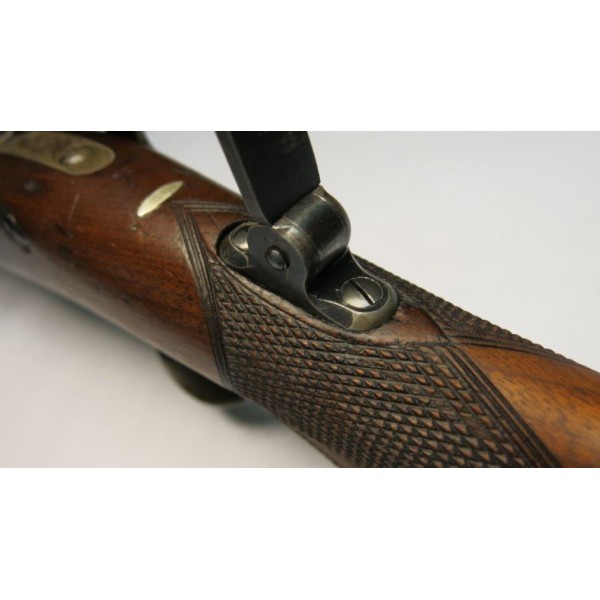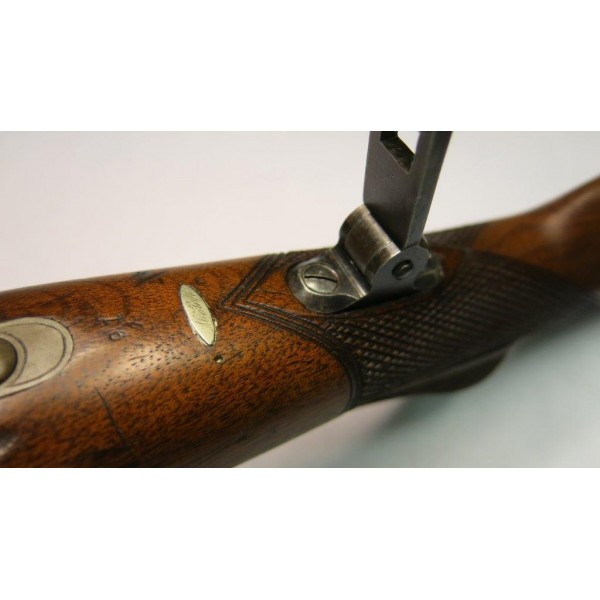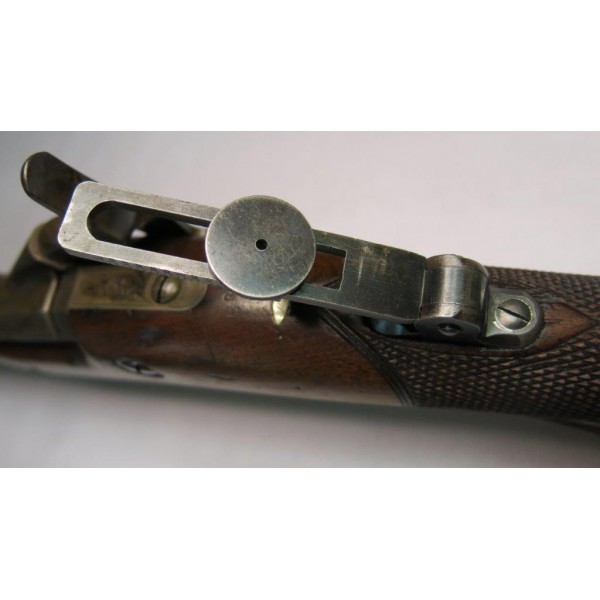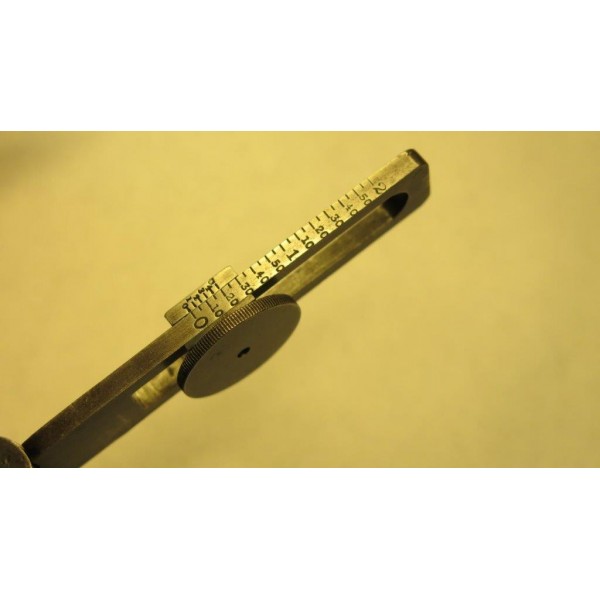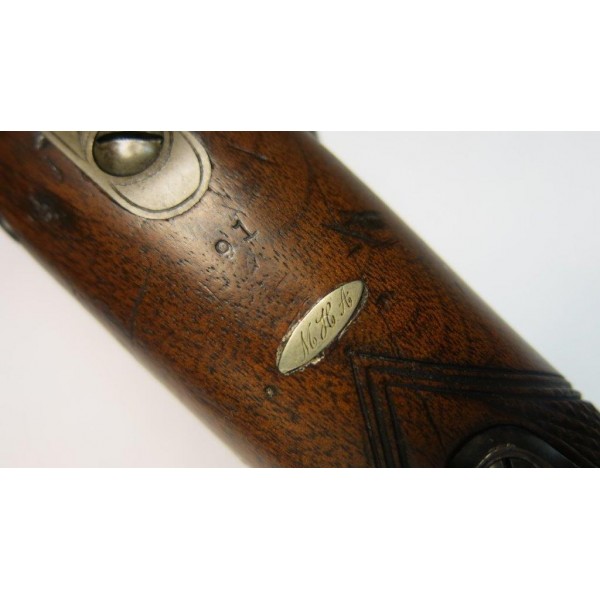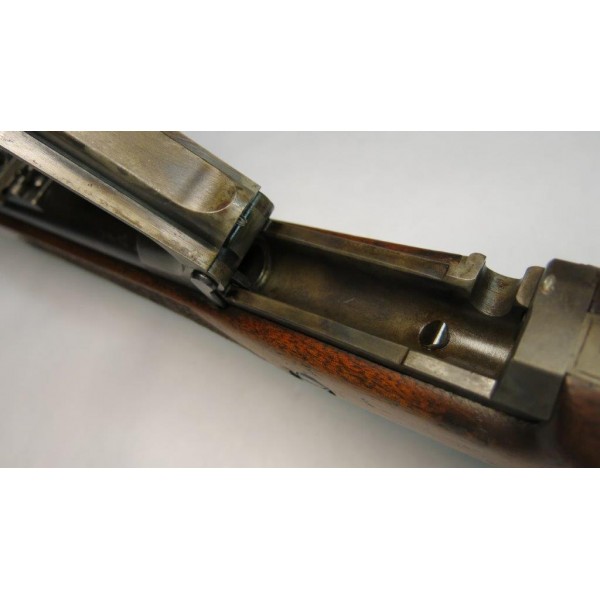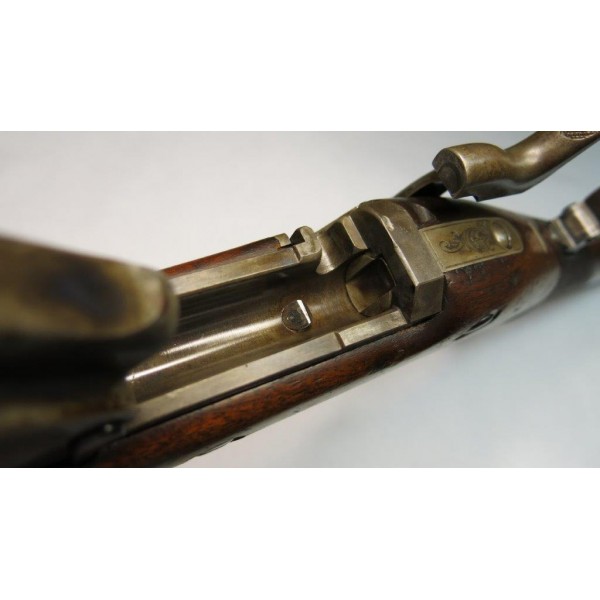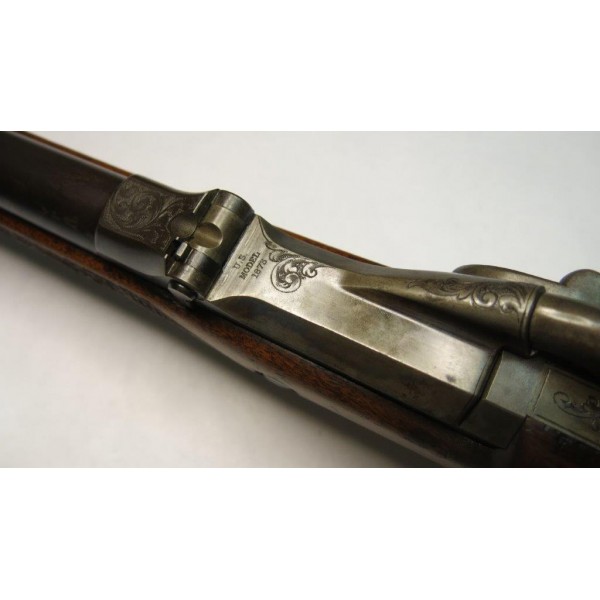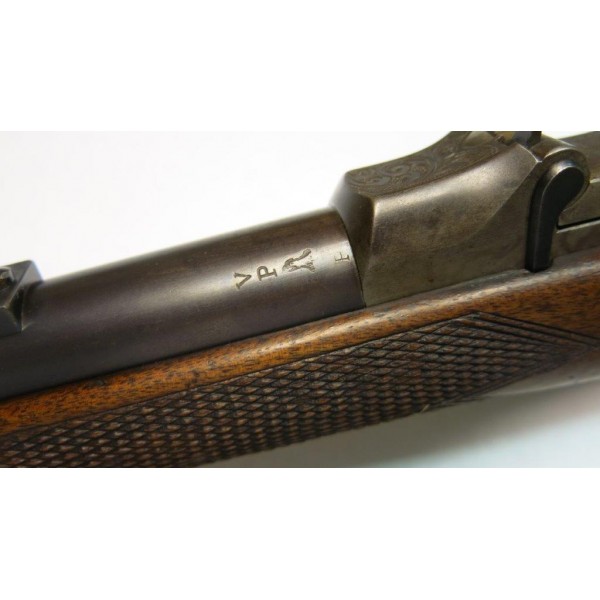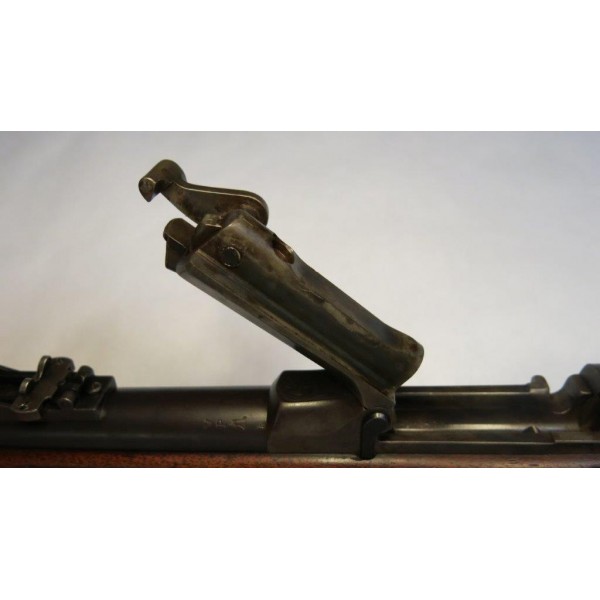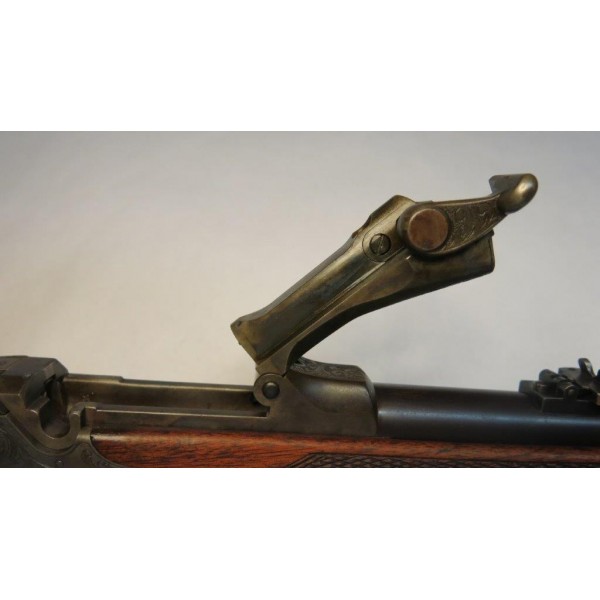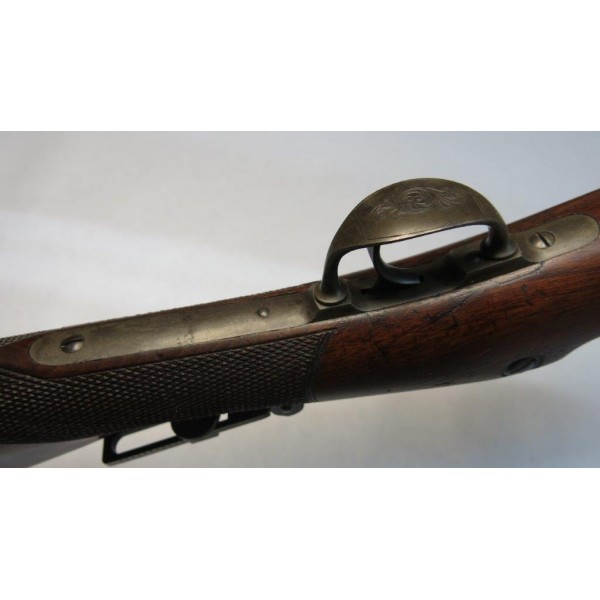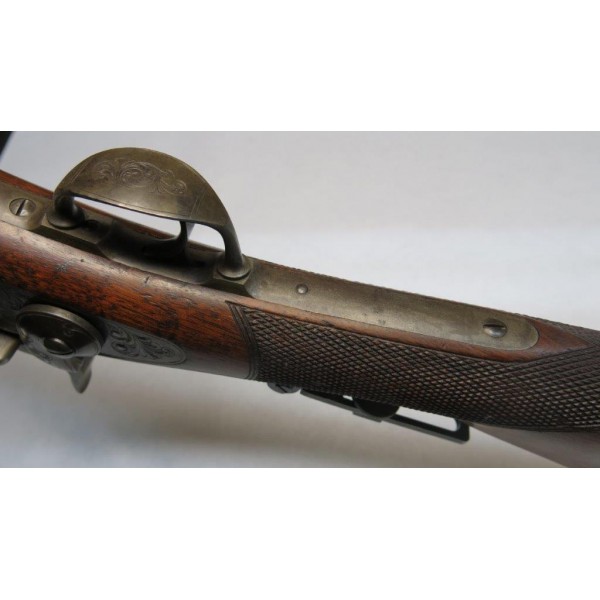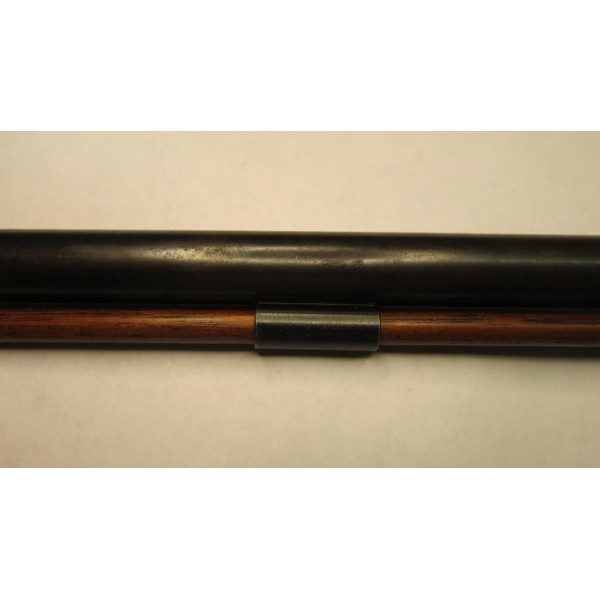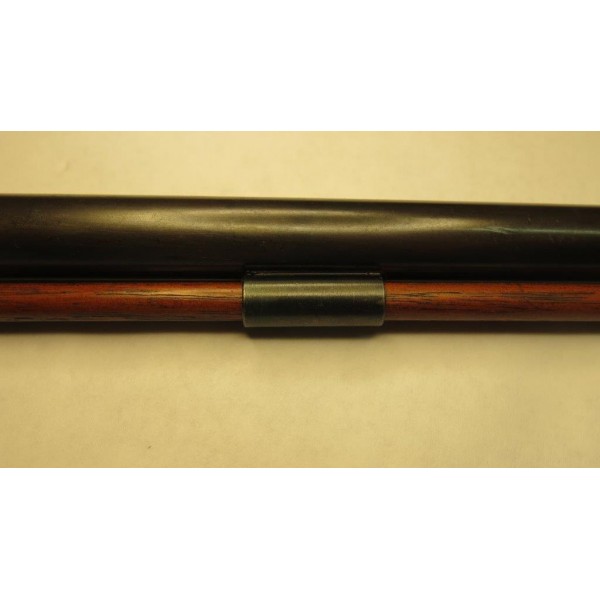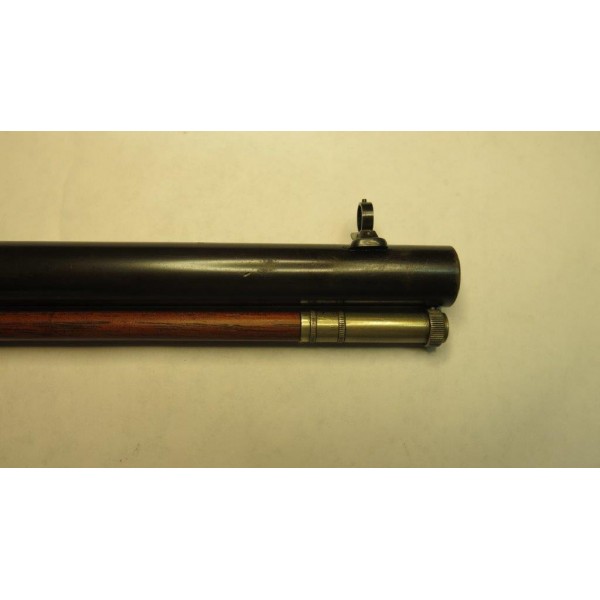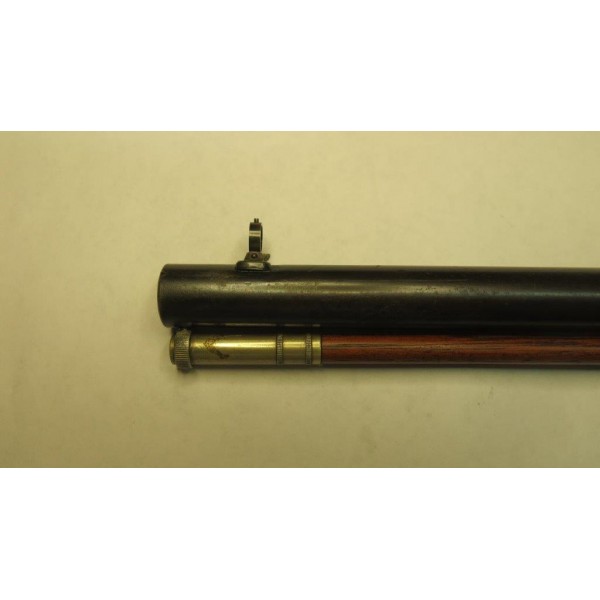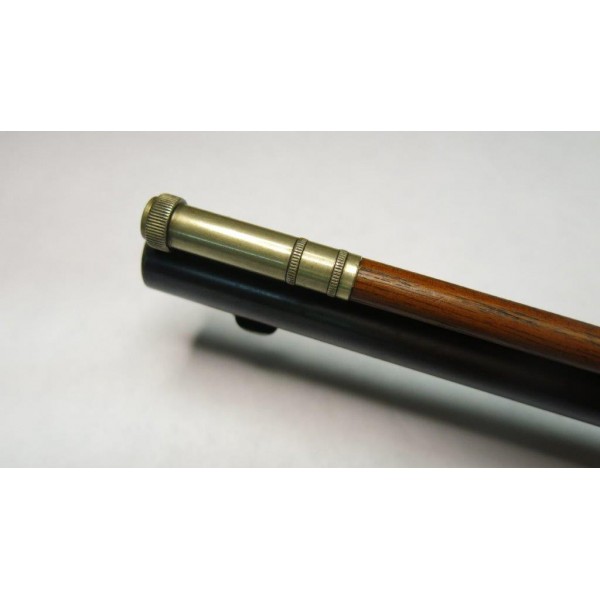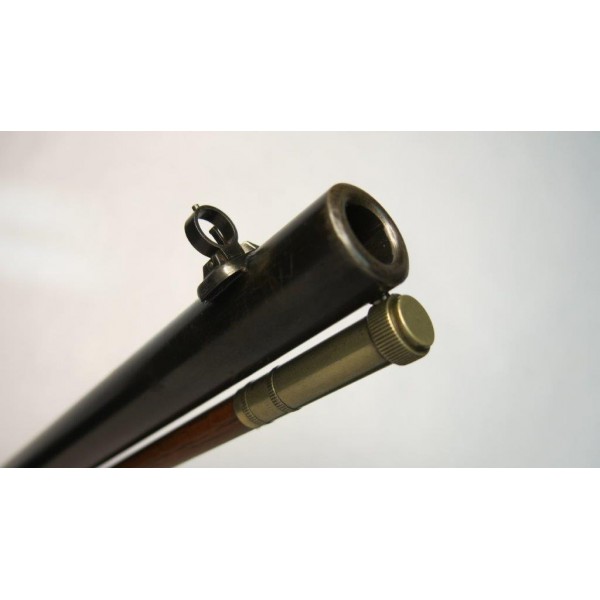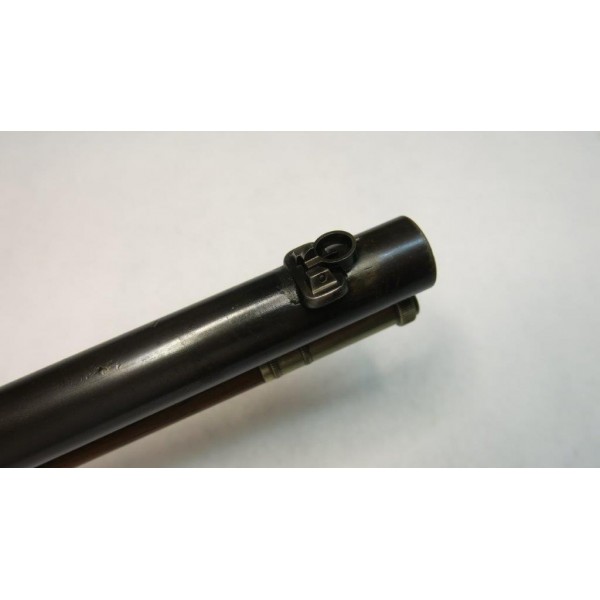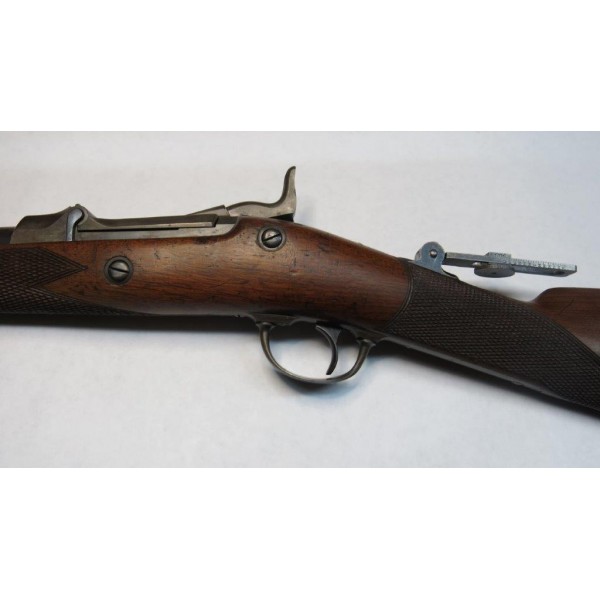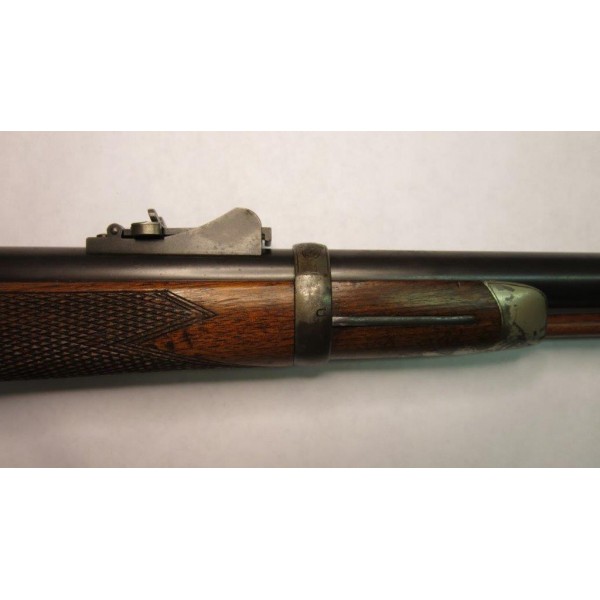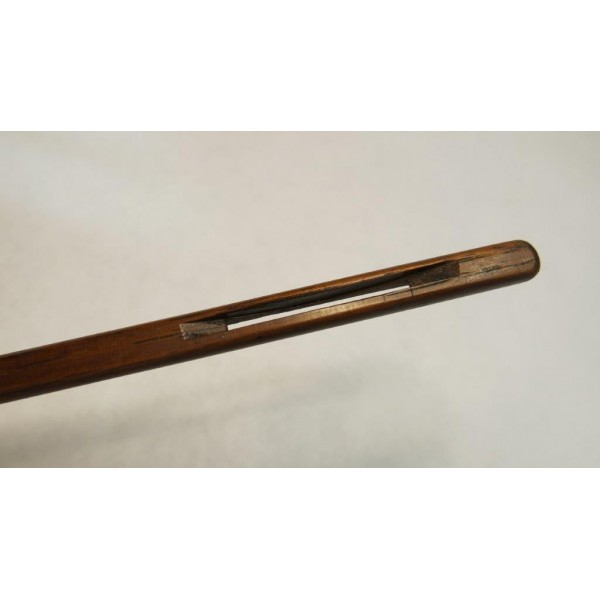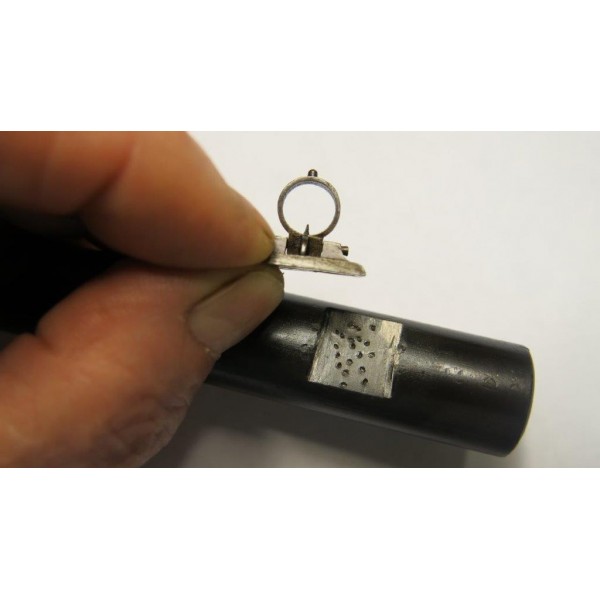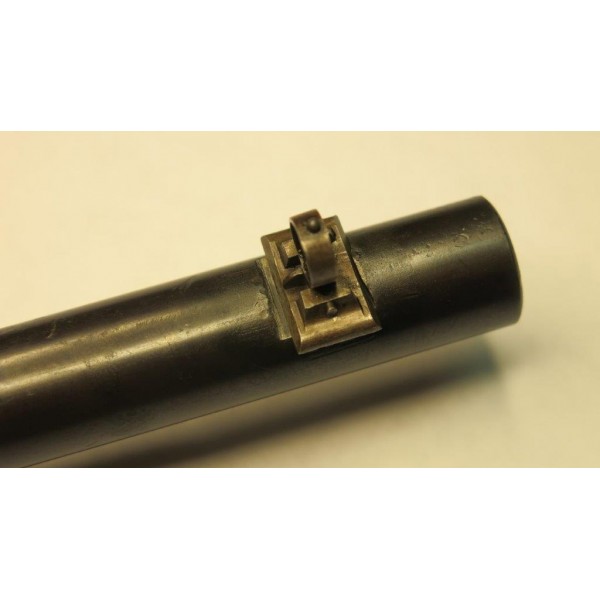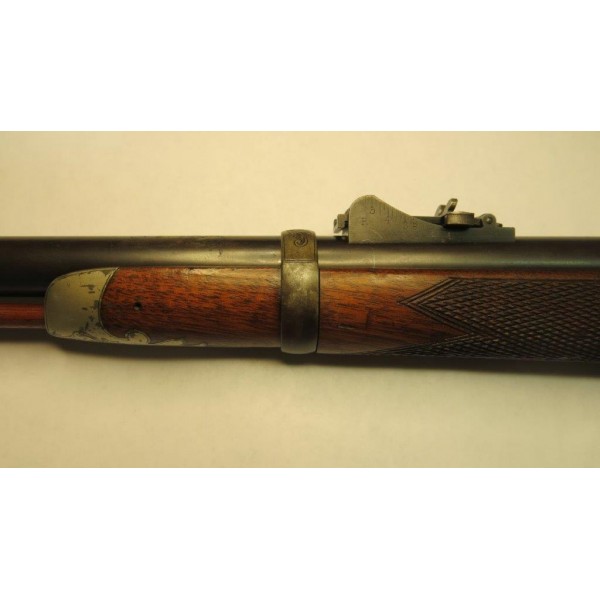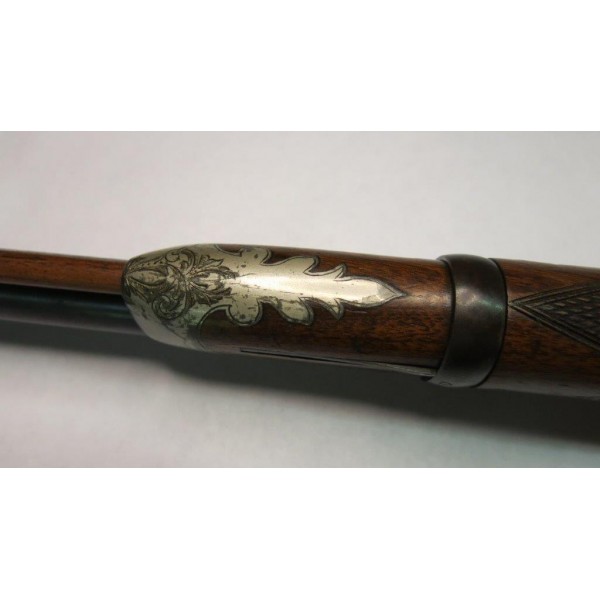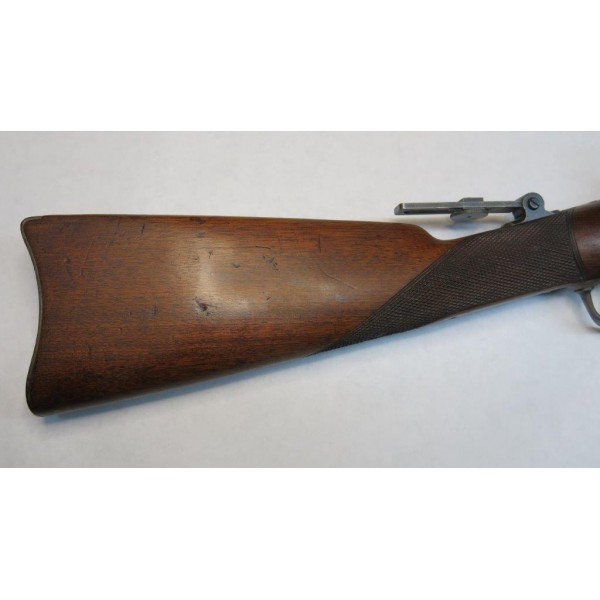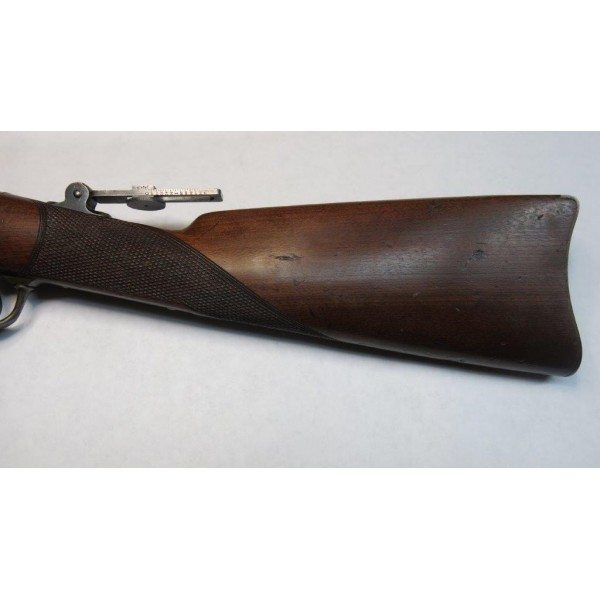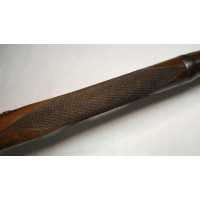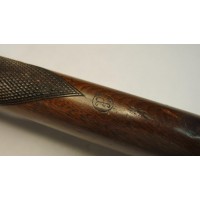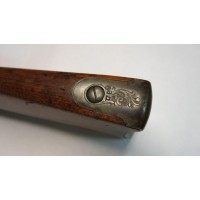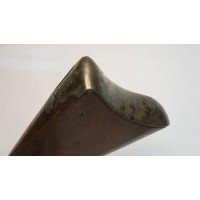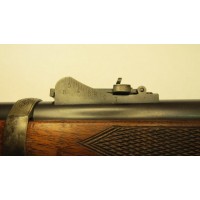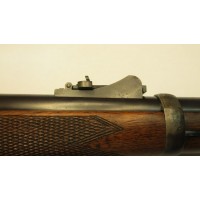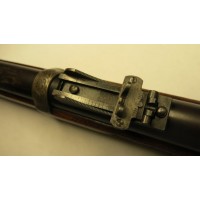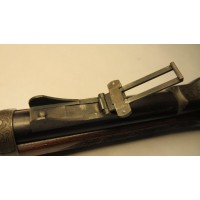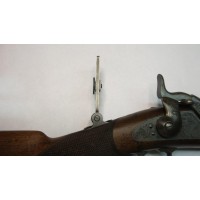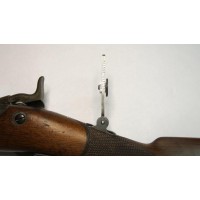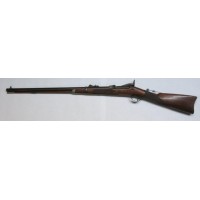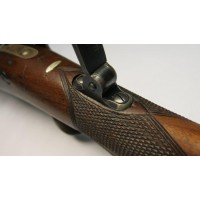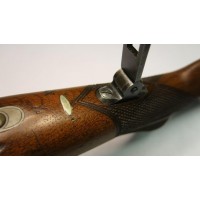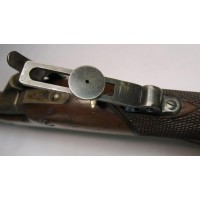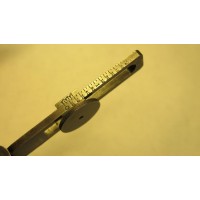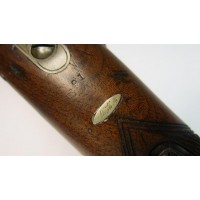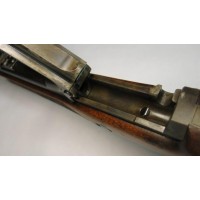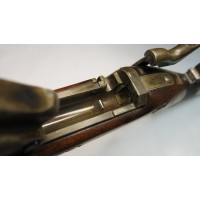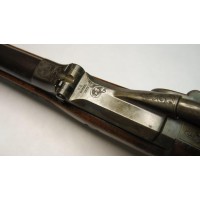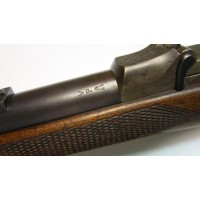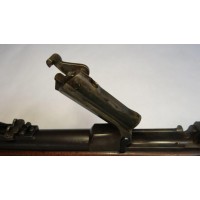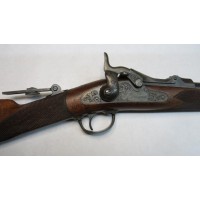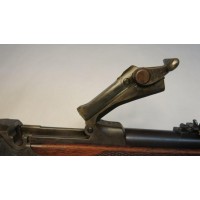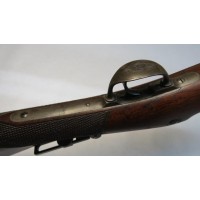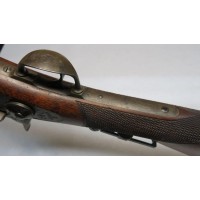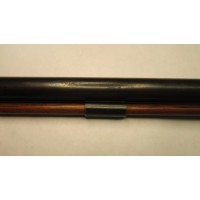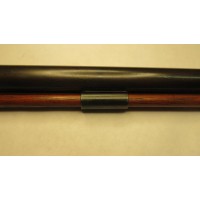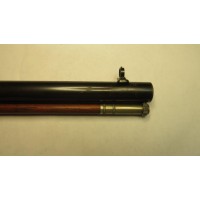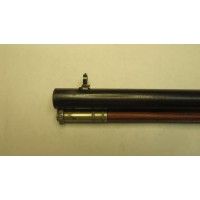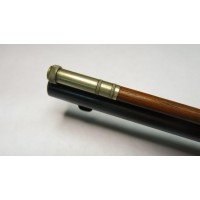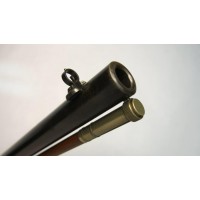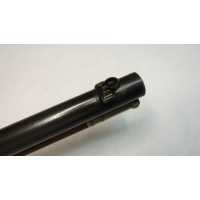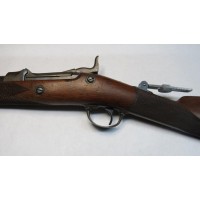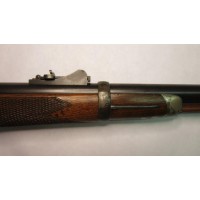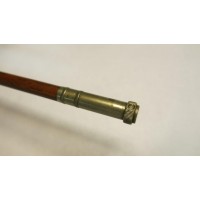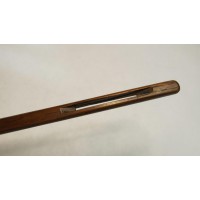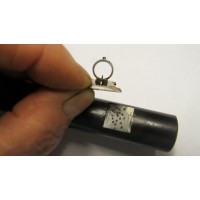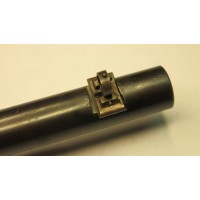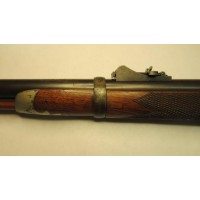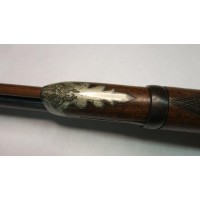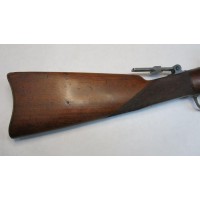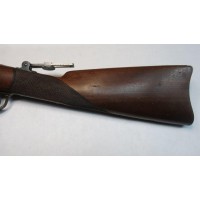Springfield Armory 1875 Officers Model Rifle Type II
Springfield 1875 Officers Model Rifle
Type II
.45 / 70 / 405
Early in the history of the Springfield "Trapdoor" service rifles, Springfield Armory built and sold as many as 100 custom Officers Sporting rifles by order. The custom options offered were barrel length, sights, trigger mechanism, engraving, checkering and the stock configuration. As time progressed the demand on the arsenal became a problem. In 1875 the armory standardized a design and eliminated the personal features that could be ordered. The rifle was chambered for the new .45/70 service cartridge and called the 1875 Officers Model. The Officers Model rifles sold for $36 ($872 today) from 1875 up to September of 1879 when the price dropped to $27 ($719 today).
The Officers Model rifles were assembled with components that were being used at the time the rifles were produced. Many details were changed in the 10 years they were in production as changes were made with the standard production arms. Current day collectors have designated three types to assist in distinguishing the changes made during the years of production. They are referred to as the Type I, Type II and Type III.
Serial number ranges for the parts used in the Officers Model rifles.
Type I 45,000 to 74,333
Type II 74,334 to 170,000
Type III 300,000 to 316,000
Total production was 477 rifles between July 1875 and June 1885.
Type I July 1, 1875 until December 31, 1876 125
Type II January 1, 1877 until June 30, 1881 252
Type III June 1885 100
The Officers Model rifles were not serial numbered. After researching the various parts of this rifle, it has been determined that it was made in early 1879. The basic rifle is correct but there have been modifications to the sighting systems and they are explained below.
This rifles receiver has the long and deep gas ports that were first utilized in the first quarter of 1878. It has square recesses at the hinge for the square shouldered breech block. The receiver is the early narrow version and is 1.076” wide.
The breech block is the fourth type and has the low arch and squared shoulders. It is marked with U.S. / MODEL / 1873. The breech block is 1.075’” wide. It has the .165” thick wall firing pin housing and the .580” comb height. These breech blocks were used from late 1877 until early 1879. The firing pin is the Third type and dates from June of 1878. The thumb latch is the second type and dates from March of 1876.
The left rear of the barrel is marked with the large V viewing proof, P firing proof, eagle head and P. The V and P are .130" tall. The eagle head is .270" tall. The markings of this size were used after the second quarter of 1876. The bottom of the barrel is marked with two proof P’s that also came into use the second quarter of 1876. The barrel tenon has rounded edges that came into use in October 1878. The rifling and muzzle crown are in excellent condition. The rifling is of the standard Springfield equally spaced three grooves and lands with a 22-inch right hand twist. The head space is perfect at .075”. The reference marks on the right side of the receiver and barrel are in perfect alignment. A cleaning rod pipe, or ferrule, is soldered to the bottom of the barrel and has no knurling. The cleaning rod retaining pin was broken off and has been replaced.
The lock plate is the second type that came into use in early 1878. The word SPRINGFIELD is 1.0” long and .10” tall. The eagle is .380” tall with a wing span of .805”. The shield is .090” tall and .165” wide. The hammer is the second type used from early 1875 to early 1880 and has stamped knurling and unclipped lower lip. All Officers rifles used the two notch tumblers. This rifles tumbler has the fly located in the center of the tumbler.
The trigger mechanisms of all Officers rifles were equipped with single set triggers. This rifle has the second variation that followed the early Tegethoff "hook and rocker" variation. The parts were all numbered or lettered as a set because they were hand fit before hardening and the parts had to be brought back together for re-assembly. All trigger parts of this rifle are marked with the number 35. After the rifle was cocked the trigger was set by pushed it forward. The rifle could also be fired like the standard service rifles without setting the trigger.
The tang sight of this rifle is a replacement and has not yet been identified. The left side of the staff has a 1.375" long scale that is graduated with 0, 10, 20, 30, 40, 50, 1, 10, 20, 30, 40, 50 and 2. There is a mark between each numbered mark. The staff is 2.975” tall and .628” wide. The flat eye piece slider has 6 corresponding index marks and the aperture is .100" in diameter. The base is inlet into an uncheckered area on the upper small of the stock. It is 1.620” long and .563” wide with rounded ends. The screws are spaced 1.065” center to center and have been replaced. The new screws and base have been set with epoxy. The original screws were machine screws that had been stripped out of the stock.
The front sight on these rifles was a two position Beech Combination Globe Sight. When the globe is vertical the pin and ball post, within the globe, is used with the tang sight for long distances. When folded down a plain blade is used with the barrel mounted sight. The sight on this rifle was not original, broken, mounted backwards and shimmed with soft solder front and back. The barrels dovetail was improperly recut and is .550” wide. A modified new Red River sight has been installed and its dovetail is .450” wide. It has a .015” thick shim affixed to the bottom with epoxy to compress the spring that effects the 90-degree rotation resistance and also brought the top of the base up to the barrels top plane. The .10” gap at the rear of the base has been filled with epoxy. The center of the ball and pin is .720” above the barrels center line and the blade is .650” above.
The rifles barrel sight is a Model 1879, second form, second variation that was incorporated about April of 1879. It is mounted with slotless screws and does appear to be mostly original to the rifle. When the rifle was purchaced the slider was a fourth form. The top plate has been replaced with a second form, second variation that is correct for the time period. The leaf is graduated from 6 to 12 on the front and 14 and 15 on the back. The left side of the base is graduated from 1 to 5 with the B rolling fire mark at 266 yards. When the sight is folded down the sight notch is .90” above the barrels center line.
The stocks of these Type II rifles do not have an inspector's cartouche on the left wrist. The final firing proof is 5” from the butt plate. These stocks were formed from the current production cadet rifle profile with a long wrist and short comb. Most type II rifles had removable pistol grips. This rifle did not have a pistol grip and there is no evidence that it ever had one however the trigger plate is not engraved indicating it was meant to have one. The rear trigger plate screw hole is about 1/4” deeper than the front screw hole to accommodate a screw with a longer engagement. A modified reproduction Pedersoli pistol grip has been installed using a custom-made screw. The wrist and forend of all Officers rifles were checkered. This rifle has very nice checkering of 13 lines per inch. There is a small silver oval inlay between the tang and tang sight that is engraved with the initials of M.H.A. It is .560” wide and .160” tall. There is a small head of a brad visible in the middle of the inlay that shows the engraving of the initials was done after the plate was installed. The identification of the initials has not been determined. The list of original purchasers does not contain anyone with those initials so the inlay was applied sometime in the rifle’s history by a subsequent owner. Just to the left of it there is an exposed small point of metal that may be the remnant of a headless brad that may be from a previously installed identification plate. Just forward of the inlay, and rear of the tang, is stamped the stock batch number 91 that is .100” tall.
The hickory cleaning rod has a nickel-plated front cap. A rear cap is not present and a slot for a cleaning patch has been milled in.
The engraving is of the leaf and vine style also known as the acanthus pattern. The parts that are engraved are: top front of the receiver, breech block, breech screw, cam latch, lock plate, hammer, butt plate, nose cap, trigger bow and barrel band.
This rifle is in NRA Antique good condition. It has been preserved in detail with Renaissance Wax.
Published data This rifle
Overall length 45 3/8" to 45 1/2" 45 1/4"
Stock length, approx. 29 5/8" 29 3/8"
Barrel length 26" to 26 1/8" 26"
Muzzle diameter 0.757" 0.760"
Barrel dia. at band 0.931" 0.931"
Barrel dia. at receiver 1.045" 1.045"
Receiver width 1.076" 1.076"
Breech block width 1.075" 1.075"
Butt plate width 1.50" 1.488"
Band to tip of nose cap 3 5/8" 3 1/4"
Cleaning rod pipe dia. 0.518" 0.476"
Cleaning rod pipe length 1.263" 1.251"
Cleaning rod length 26 7/8" 26 5/8"
Sight radius from M79 sight 20.8" xxx"
Sight radius from peep 32 7/8" xxx"
Weight about 8 lb. 8 lb.
Head space 0.070" to 0.075" 0.075"
Various markings:
Breech block U.S. / MODEL / 1873
Lock plate Eagle motif, U.S. / SPRINGFIELD
Back of lock plate M, R, E, X and possible B or 3
Barrel band, right side Large U
Butt plate US
Barrel left rear Large V, P, eagle head, small P
Barrel bottom PP
Bottom of receiver K
Inside of trigger bow 35, 8
Backside of trigger plate 35
Trigger 35
Trigger main spring 35
Spring screw 35
Kick off and bar 35
Tumbler 16, H
Sear 16, 4
Sear spring U
Bridle L
Main spring Possible R on hook end


